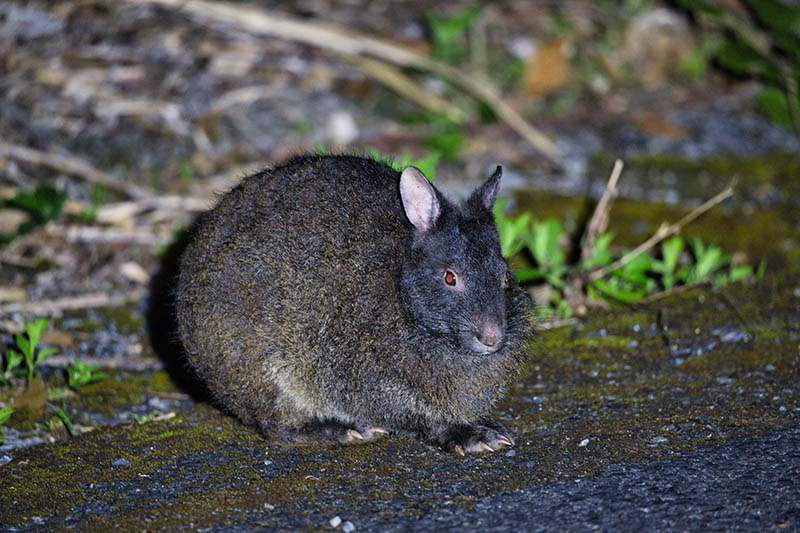
Click to Skip Ahead
Rabbits can see colors, but their perception is not as rich and complex as that of humans. So, even though your beloved bunny doesn’t see the world in complete black and white, their visual abilities differ from yours in many ways. If you’d like to learn more about how your long-eared companion perceives their world, read on!
What Is Color?
Before we discuss rabbit vision, let’s briefly review what we mean by “color.” Visible light is made up of different wavelengths between 380 and 750 nm. When light hits an object, that object reflects part of the wavelengths and absorbs the rest. For example, this is why you perceive a lemon as “yellow”; it reflects the yellow wavelength and absorbs all others.
Therefore, an object that absorbs all wavelengths of light will appear black, while an object appears white when it reflects all wavelengths of light.

How Do We See Color?
The retina is a specialized tissue in vertebrates’ eyes that contains photoreceptors called rods and cones. Their job is to spot the light and send electrical signals to the brain via the optic nerve. Fundamentally, rods are responsible for interpreting light while cones interpret colors.
But to be able to “see” the colors, light rays must be refracted to reach the retina. Once the light reaches the retina, millions of photoreceptors (the rods and cones) capture it. Then, these photoreceptors convert light waves into information that the brain can process, such as color, shape, and movement.
How Do Rabbits See Colors?
Although rabbits don’t see in black and white, their color spectrum is limited. Rabbits have a dichromatic vision, which means they lack one of the cone types. Unlike humans, who have trichromatic vision and can discern a wide spectrum of colors by combining the three primary light colors (red, blue, and green), rabbits can only see in blue and green.
So, like most herbivores, rabbits only have two types of cones: cones sensitive to the blue spectrum and cones sensitive to the green spectrum. That said, since their retina has mostly rods and very few cones, rabbits generally have good night vision.
FAQ
Can Rabbits See in the Dark?
Yes! Rabbits have better night vision than humans due to their rod cells, which provide monochromatic vision in low-light conditions. Although lacking the tapetum lucidum of many other animal species, which improves night vision by reflecting light onto the retina, the arrangement of their rods helps them see movement and shapes in the dark. So although they can’t see in complete darkness, they can see well enough to navigate and detect movement at night.

Can Rabbits See All the Colors That Humans Can?
No, rabbits have limited color vision compared to humans. They can primarily see shades of blue and green, and they perceive red as a shade of gray or brown.
Do Rabbits See the World in Black and White?
No, rabbits do not see the world in black and white. They have color vision, though it is limited compared to humans. It’s most sensitive to blue and green.
Tips for Keeping Your Rabbit’s Vision Healthy
Even though you can’t make your rabbit see life through “rose-colored glasses,” you can still take care of their eye health by doing the following.
Providing a Balanced Diet
Give your bunny access to high-quality hay, fresh veggies, a tablespoon or two of rabbit pellets, and the occasional piece of fruit. This type of diet is perfectly suited to rabbits and contains essential nutrients like vitamins A, E, and C, which are important for maintaining good eye health.
Scheduling Regular Veterinary Check-Ups
Routine visits to a rabbit-savvy veterinarian are crucial for monitoring your rabbit’s overall health, including their eye health. Your vet can detect early signs of eye problems common in rabbits (such as eye inflammation or cloudy eyes) and provide appropriate treatment.

Monitoring Your Rabbit’s Eye Appearance
Pay attention to any changes in your rabbit’s eye appearance. If you notice excessive tearing, discharge, redness, cloudiness, squinting, or any other unusual signs related to their eyes, you should consult a veterinarian promptly. Early detection and treatment can prevent more severe eye issues.
Bottom Line
Rabbits do indeed perceive the world in color, albeit with limitations compared to humans. Their dichromatic vision—seeing the world in blue and green—is common to most herbivores, and it’s more than enough to help them navigate their surroundings, detect potential threats, and find food. That said, the latter is less important for our dear domestic bunnies!
Featured Image Credit: UNIKYLUCKK, Shutterstock
The post Can Rabbits See Colors? Vet Approved Facts & Info appeared first on Pet Keen.

